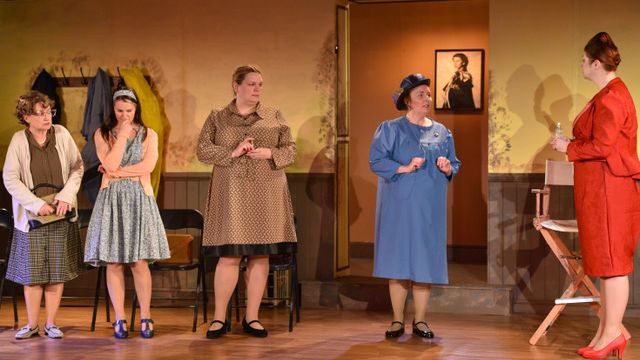The Revlon Girl
Jennifer Willison is a director who finds plays that extend her cast and her audience. The Revlon Girl is no exception. It is a play about coping with fear and loss resulting from an unimaginable event.
In the little coal mining village of Aberfan in Wales on 21st October 1966 at 9.15am, a 34-metre-high tip of colliery spoil slid down a hillside above the town. The wet, black slurry engulfed a primary school and a village street killing 116 children and 28 adults.
Neil Anthony Docking’s play reimagines the effect of that devastation through the eyes of four grieving mothers – and a demonstrator from Revlon Cosmetics who has been invited, it seems, to raise their spirits. It is a play about blame and guilt and finding ways to cope.
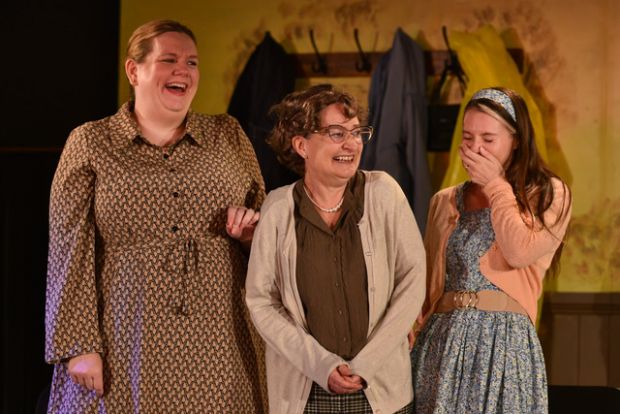
Docking’s characters are starkly drawn, their stories told candidly, bluntly, heartbreakingly. They symbolise every grieving villager – and are a sharp contrast to the “Revlon girl” in her smart car, fashionable clothes and make up.
Willison and assistant director Todd Beilby have ensured the cast know those characters well. That they understand their heartache, the different ways they cope – or don’t cope – and their distrust of the make up girl from Bristol who appears to have everything. There is depth in the characterisations – and in the way Willison uses distance and stillness to accentuate tension. Some scenes are almost ethereal. The women stand alone, listening but isolated in their own thoughts, eerily absent.
They come together on a rainy night in a bleak meeting room designed by Casey Moon-Watton. A leak in the ceiling drips constantly as rain and occasional thunder and lightning, also designed by Moon-Watton, temper the scene. Wayne Chee’s lighting effectively emphasises the sad, bleakness of the setting.
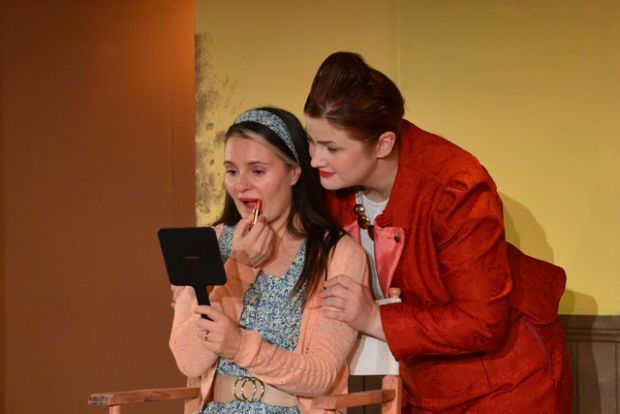
The only brightness is the “Revlon girl” played by Niamh McKervey. Her elegant red suit and handbag contrast with the dingy dampness of the setting, and McKervey ensures that the audience is aware of her tension and misgiving. She too is observant, on edge. Even when she goes into her sales “spiel” she is tentative. But there is a strength in the character McKervey portrays – a strength and understanding that is explained later in the play.
Laura Stead opens the production as Sean, establishing the rhythm of the play with the gentle lilting accent that sets it firmly in Wales. She hurries in from the rain to set up for the demonstration – and find a bucket for the leak ceiling!
Stead is small and light on her feet and the Sian she creates is almost bird-like, quick to react, eager to please, helpful but like all the women, always a little edgy. Sian has a special reason for wanting this demonstration to work – which she eventually explains in a poignantly delivered monologue – and Stead makes her quietly determined yet understanding and supportive.
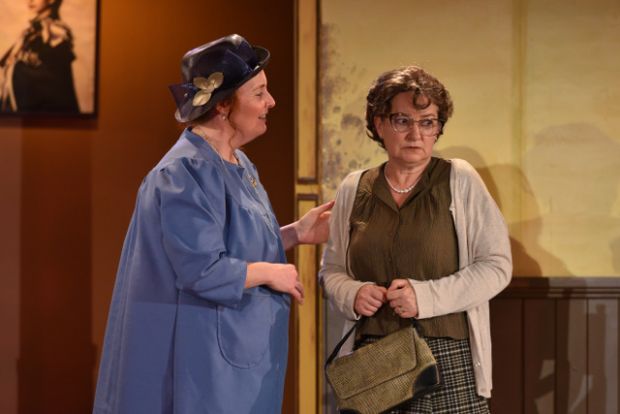
Kate Kelly is Marilyn. Quiet and nervous, Marilyn has turned to a medium to confirm her belief that warnings about the landslide had been ignored. Kelly makes her introverted, protecting herself form the taunts of the other women by wrapping herself in a contained, isolated grief expressed in her sad, haunted eyes and tight control. She watches, listens, but never relaxes, except for brief outbursts that touch the heart.
Jean, wife of the local vicar, is played by Annalie Hamilton. Hamiliton makes Jean strong, seemingly secure in her faith and her inside awareness of government recommendations and decisions that are disturbing others. There is however a strangeness in the fact that Jean ignores her obvious pregnancy – and her rejection of the daughter who survived when her high achieving son was lost. Hamilton shows this a social arrogance that makes the other women wary of Jean, especially Rona played by Anthea Brown.
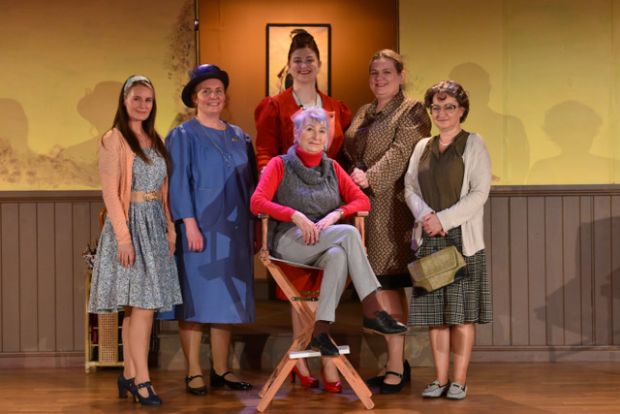
Rona is different, outspoken, constantly shocking the others with bad language and derisive comments. Docking uses Rona to break the mood and Willison and Brown ensure that she does. Rona’s critical abrasiveness and constant swearing delivered with Brown’s comic timing and fast, clear delivery breaks the tension and brings moments of relief from the misery.
Between them the women portray many of the different and lasting effects of tragedies such as the Aberfan disaster. This cast places the women in their time – but ensures that their stories are remembered – and the negligence that led to them not forgotten.
The Revlon Girl has a strong message told in an equally strong production.
Carol Wimmer
Photographer: Dan Ferris.
Subscribe to our E-Newsletter, buy our latest print edition or find a Performing Arts book at Book Nook.

